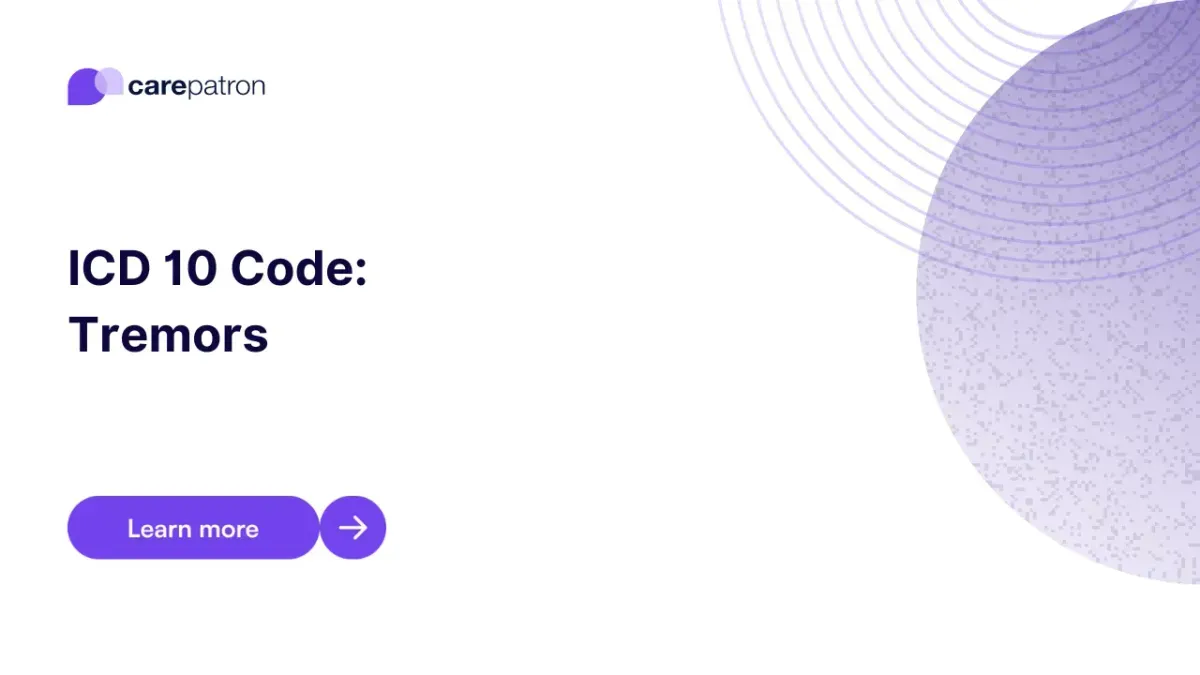
Tremors ICD-10-CM Codes
Your complete guide to ICD-10-CM codes for diagnosing and documenting tremors.
Use Code
Commonly asked questions
A tremor ICD-10-CM code should be used in medical documentation when diagnosing, treating, or billing for various tremors. This ensures accurate clinical records and efficient healthcare management.
Treatments for tremors depend on their cause. Options may include medications like beta-blockers or anticonvulsants, physical therapy, lifestyle changes (like reducing caffeine), and surgical interventions such as deep brain stimulation for severe cases.
A diagnosis code for tremors offers a standardized method for indicating a patient's presence and type of tremor. It's crucial for clinical management, research, and administrative tasks like insurance billing.
EHR and practice management software
Get started for free
*No credit card required
Free
$0/usd
Unlimited clients
Telehealth
1GB of storage
Client portal text
Automated billing and online payments
